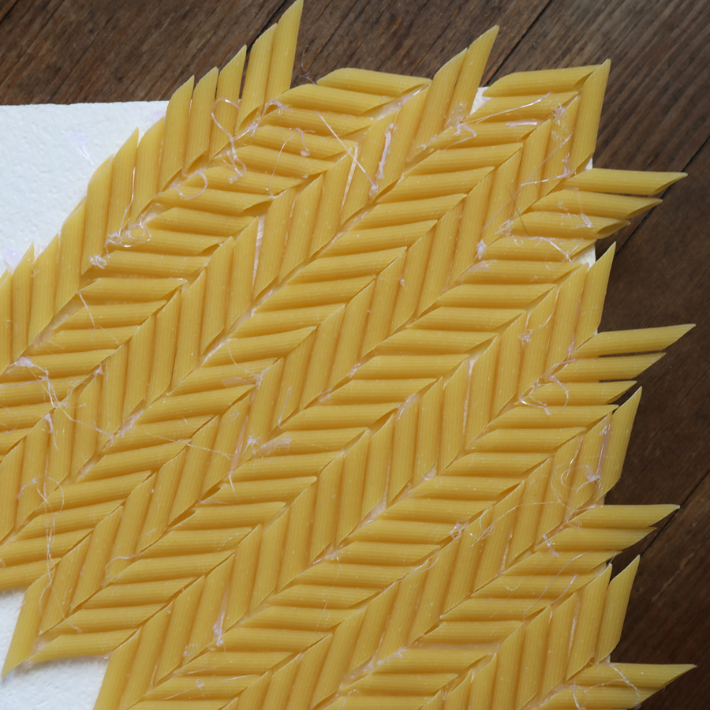Math meets art in this cool project that lets kids experiment with tessellation, or tiling, and gives them an early introduction to geometry. Covering a poster board with tiled gum or uncooked pasta creates a mathematical mosaic. Leave the gum wrapped to make art you can chew on for weeks, or unwrap it to glue onto a scented masterpiece.
Safety Tips and Hints
Gum is a choking hazard for small children.
Kids should be supervised around glue guns and hot glue.
Don’t worry if your young artist leaves some white space in his design. Once you help him get started, let his creative genius take over.
What You’ll Need
- Uncooked pasta with a uniform shape, like penne, or several packs of colorful gum
- Glue (school glue or hot glue)
- Sturdy paper surface, like poster board or foam core board
What To Do
Step 1: If you’re using gum, ask your child whether he'd like to use wrapped or unwrapped gum. Keep it wrapped if he wants to chew it later. Unwrapped gum is easier to work with.
Step 2: Tessellations are patterns made up of shapes that fit together like puzzle pieces, leaving no space in between. Tessellation is also called tiling. Use gum or pasta to show your young learner what a tessellated (tiled) pattern might look like with whatever shape she is using.









